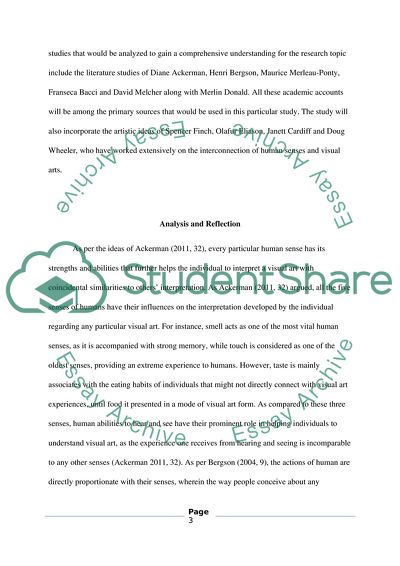Cite this document
(Beyond The Visible - Triggering Perceptive and Conscious Shifts in Three-Dimensional Site Specific Art Research Proposal Example | Topics and Well Written Essays - 2250 words, n.d.)
Beyond The Visible - Triggering Perceptive and Conscious Shifts in Three-Dimensional Site Specific Art Research Proposal Example | Topics and Well Written Essays - 2250 words. https://studentshare.org/visual-arts-film-studies/1842949-beyond-the-visible-triggering-perceptive-and-conscious-shifts-in-three-dimensional-site-specific-art
Beyond The Visible - Triggering Perceptive and Conscious Shifts in Three-Dimensional Site Specific Art Research Proposal Example | Topics and Well Written Essays - 2250 words. https://studentshare.org/visual-arts-film-studies/1842949-beyond-the-visible-triggering-perceptive-and-conscious-shifts-in-three-dimensional-site-specific-art
(Beyond The Visible - Triggering Perceptive and Conscious Shifts in Three-Dimensional Site Specific Art Research Proposal Example | Topics and Well Written Essays - 2250 Words)
Beyond The Visible - Triggering Perceptive and Conscious Shifts in Three-Dimensional Site Specific Art Research Proposal Example | Topics and Well Written Essays - 2250 Words. https://studentshare.org/visual-arts-film-studies/1842949-beyond-the-visible-triggering-perceptive-and-conscious-shifts-in-three-dimensional-site-specific-art.
Beyond The Visible - Triggering Perceptive and Conscious Shifts in Three-Dimensional Site Specific Art Research Proposal Example | Topics and Well Written Essays - 2250 Words. https://studentshare.org/visual-arts-film-studies/1842949-beyond-the-visible-triggering-perceptive-and-conscious-shifts-in-three-dimensional-site-specific-art.
“Beyond The Visible - Triggering Perceptive and Conscious Shifts in Three-Dimensional Site Specific Art Research Proposal Example | Topics and Well Written Essays - 2250 Words”. https://studentshare.org/visual-arts-film-studies/1842949-beyond-the-visible-triggering-perceptive-and-conscious-shifts-in-three-dimensional-site-specific-art.


